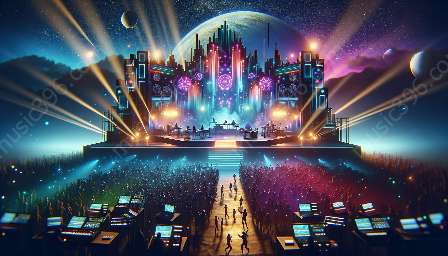Electronic music encompasses a wide range of genres that have evolved over the decades, each with its own unique characteristics, history, and influences. From ambient and techno to dubstep and trance, the world of electronic music offers something for every music enthusiast. Dive into this article to explore the fascinating landscape of electronic music genres.
Ambient
Ambient music creates an atmospheric, often non-intrusive soundscape, characterized by long, repetitive, and soothing sounds, with roots in the 1970s. Artists like Brian Eno and Steve Roach have greatly influenced this genre.
Techno
Techno music originated in Detroit in the 1980s, marked by its repetitive beats, synthesized sounds, and futuristic vibe. Pioneers of techno include Juan Atkins, Derrick May, and Kevin Saunderson.
Dubstep
Emerging in the early 2000s, dubstep is known for its intense bass lines, complex rhythms, and use of syncopated patterns. Artists like Skream, Benga, and Coki have driven the evolution of the genre.
Trance
Trance music features a high tempo, uplifting melodies, and a euphoric feel, often associated with clubs and festivals. Originating in the early 1990s, trance has evolved with artists such as Armin van Buuren and Paul van Dyk.
Drum and Bass
With a focus on fast breakbeats and heavy basslines, drum and bass emerged from the UK rave scene in the early 1990s. Artists like Goldie, LTJ Bukem, and Roni Size have been pivotal in shaping the genre.
House
House music, inspired by disco and electronic music, is characterized by repetitive 4/4 beats, sample loops, and soulful vocals. Chicago and New York played key roles in the development of house music in the 1980s.
Chillstep
Chillstep combines the soothing elements of dubstep with ambient and chillout music, creating a relaxing and mellow atmosphere. This genre has gained popularity in recent years, with artists like Blackmill and Crywolf at the forefront.
Topic
Technological Innovations in Electronic Music Production
View details
Influence of Electronic Music on Mainstream Pop
View details
Impact of Electronic Music on Live Performance Industry
View details
Cultural and Social Impacts of Electronic Music
View details
Analog vs Digital in Electronic Music Production
View details
Internet's Impact on Electronic Music Distribution
View details
Elements of Successful DJ Sets in Electronic Music
View details
Electronic Music in Avant-garde and Experimental Music
View details
Elements of Successful Remixes in Electronic Music
View details
Influence of Electronic Music on Fashion and Youth Culture
View details
Elements of Successful Live Electronic Music Performances
View details
Historical Milestones in the Evolution of Electronic Music
View details
Psychological Effects of Electronic Music on Listeners
View details
Globalization of Electronic Music and Local Music Scenes
View details
Questions
How has technology influenced the development of electronic music?
View details
Who are some of the pioneers in electronic music production?
View details
What are the different subgenres of electronic music?
View details
How do synthesizers and samplers contribute to electronic music production?
View details
What role does software play in electronic music production?
View details
How has electronic music influenced mainstream pop music?
View details
How has electronic music impacted the live music performance industry?
View details
What are some notable electronic music festivals around the world?
View details
What are the cultural and social impacts of electronic music?
View details
How has electronic music shaped the nightclub and rave culture?
View details
What are the key differences between analog and digital electronic music production?
View details
How has the internet changed the distribution and consumption of electronic music?
View details
What are the key legal issues surrounding electronic music sampling?
View details
What are some influential record labels in the electronic music industry?
View details
How has the DIY (Do-It-Yourself) ethos influenced electronic music production?
View details
What are the key elements of a successful DJ set in electronic music?
View details
How has electronic music been used in film soundtracks?
View details
What are the key copyright issues in electronic music production?
View details
What are some notable female pioneers in electronic music?
View details
What role does sound design play in electronic music production?
View details
How has electronic music influenced avant-garde and experimental music?
View details
What are the key characteristics of minimal techno music?
View details
How have video games influenced electronic music production?
View details
What are the key elements of a successful remix in electronic music?
View details
What is the relationship between electronic music and visual arts?
View details
How has electronic music influenced fashion and youth culture?
View details
What are the key elements of a successful live electronic music performance?
View details
What are the key historical milestones in the evolution of electronic music?
View details
How has the globalization of electronic music impacted local music scenes around the world?
View details


